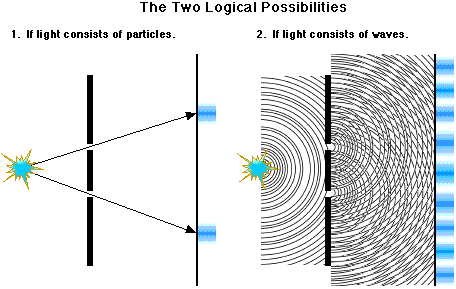It shows the inability of the classical concepts "particle" or "wave" to fully describe the behavior of quantum-scale objects.
Einstein wrote:
"It seems as though we must use sometimes the one theory and sometimes the other, while at times we may use either. We are faced with a new kind of difficulty. We have two contradictory pictures of reality; separately neither of them fully explains the phenomena of light, but together they do". ("Complementarity and the Copenhagen Interpretation of Quantum Mechanics", By Harrison, David (2002), Dept. of Physics, U. of Toronto.)
Light as "particles":
 |
| Georges Seurat - La Parade (1889) - detail showing pointillism technique. |
 |
| Georges Seurat: "The Eiffel Tower" (1889) |
Light as "waves":
 |
| Van Gogh: "starry night" (1889) |
 |
| Van Gogh: detail of "Road with Cypress and Star" (1890) |
A famous 1800s physics experiment by English scientist Thomas Young in an effort to find out if light is a wave or a collection of tiny particles, set up the so-called "double-slit experiment."
The wave nature of light causes the light waves passing through the two slits to interfere, producing bright and dark bands on the screen—a result that would not be expected if light consisted of classical particles.
However, the light is always found to be absorbed at the screen at discrete points, as individual particles (not waves). Furthermore, versions of the experiment that include particle detectors at the slits find that each photon of light passes through one slit (as would a classical particle), but not through both slits (as would a wave). These results demonstrate the principle of wave–particle duality.
The double-slit experiment, one of the foundations of quantum physics, showed that particles can behave like waves.
Source: In 125 Years, Millions Of People Have Looked At This Painting. No One Really Saw It Until Now.


No comments:
Post a Comment